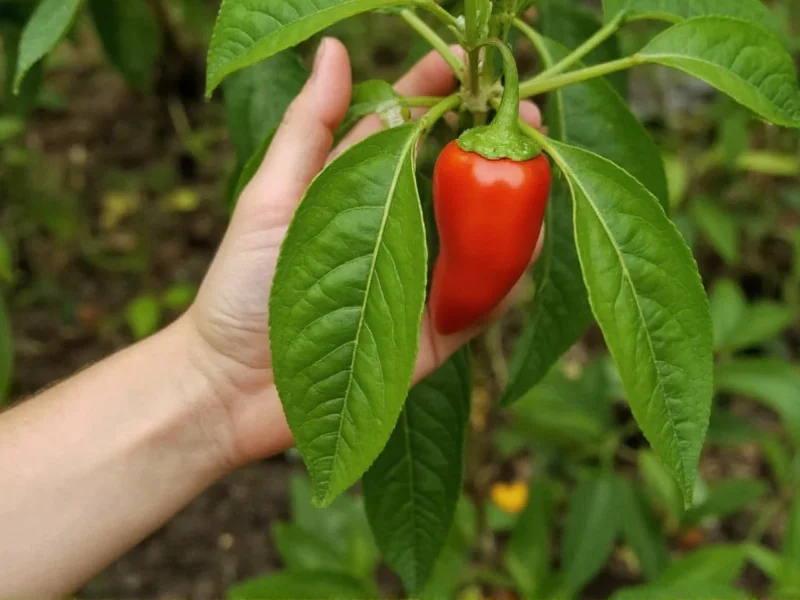The True Source of Pepper: Piper Nigrum Explained
When people ask what is pepper made out of, they're typically referring to black pepper—the world's most traded spice. Unlike many processed foods, authentic pepper contains no additives or artificial ingredients. It's a completely natural product derived from a single plant species: Piper nigrum.
This climbing vine produces small berry-like fruits that become peppercorns when dried. The transformation process determines the pepper type:
| Pepper Type | Processing Method | Flavor Profile |
|---|---|---|
| Black Pepper | Unripe berries cooked and sun-dried | Sharp, pungent, complex heat |
| White Pepper | Ripe berries soaked to remove outer layer, then dried | Milder, earthy, less complex |
| Green Pepper | Unripe berries preserved in brine or freeze-dried | Fresh, herbal, subtle heat |
| Red Pepper | Ripe berries dried with outer layer intact | Sweet, fruity, mild heat |
Understanding What Plant Pepper Comes From
The Piper nigrum plant belongs to the Piperaceae family and thrives in tropical climates with consistent rainfall. Major growing regions include:
- India's Malabar Coast (historically the largest producer)
- Vietnam (current largest global producer)
- Indonesia
- Brazil
- Madagascar
Each peppercorn starts as a flower cluster on the vine. As berries mature, they change color from green to yellow to red. Harvest timing determines the final pepper type. This natural variation explains how is pepper produced without artificial intervention.
Common Misconceptions About Pepper Origins
Many people confuse what plant does pepper come from with other spices called "pepper." True pepper (Piper nigrum) shares no botanical relationship with:
- Bell peppers (Capsicum annuum) - members of the nightshade family
- Chili peppers (Capsicum species) - also nightshades
- Sichuan pepper (Zanthoxylum species) - citrus relatives
This confusion stems from European explorers misidentifying New World chilies as "peppers" due to their similar pungency. Understanding are all peppers from the same plant prevents culinary mistakes and dietary concerns.
Historical Significance and Global Trade
Pepper has shaped human history for over 4,000 years. Ancient Egyptians used it in mummification, while Romans valued it as currency. During the Middle Ages, a sack of pepper could buy a slave or ransom a prisoner.
The spice's value drove European exploration, with Vasco da Gama's 1498 voyage to India primarily seeking direct access to pepper sources. This historical context helps explain why is black pepper natural was such a critical question before modern food labeling.
Nutritional Composition of Pure Pepper
Authentic pepper contains no fillers or additives. A single teaspoon (2g) of black pepper provides:
- 6 calories
- 0.1g protein
- 1.4g carbohydrates
- 0.2g fat
- 0.6g dietary fiber
- Significant manganese (18% DV)
- Moderate iron (5% DV) and potassium (3% DV)
The compound piperine (5-9% of dry weight) gives pepper its characteristic heat and enhances nutrient absorption—particularly curcumin from turmeric. This explains why what are peppercorns made from matters for both flavor and health benefits.
Culinary Applications and Quality Indicators
Chefs prefer whole peppercorns over pre-ground pepper because grinding releases volatile oils that evaporate quickly. High-quality pepper shows these characteristics:
- Uniform size and color for the specific variety
- Strong, complex aroma when crushed
- No musty smell (indicates moisture damage)
- Heavy weight (light peppercorns may be hollow)
Understanding what is pepper made out of helps consumers avoid adulterated products. Some low-quality brands mix pepper with starches, charcoal, or other fillers. Pure pepper should contain only one ingredient: Piper nigrum berries.
Frequently Asked Questions
Is black pepper made from multiple ingredients?
No, authentic black pepper contains only one ingredient: dried unripe berries from the Piper nigrum plant. Pure pepper requires no additives, fillers, or processing beyond sun-drying. Some commercial blends may mix pepper with salt or other spices, but true pepper is a single-ingredient product.
Can pepper go bad or expire?
Whole peppercorns maintain peak flavor for 2-3 years when stored in an airtight container away from light and moisture. Ground pepper loses potency within 4-6 months. While pepper doesn't technically expire, stale pepper loses its characteristic aroma and heat. Properly stored peppercorns remain safe to consume indefinitely, though flavor diminishes over time.
Why does white pepper taste different from black pepper?
The flavor difference comes from processing. Black pepper includes the fruit's outer layer (pericarp), which contains essential oils that create complex, sharp notes. White pepper removes this layer through soaking, leaving only the seed with more earthy, musty flavors. This explains difference between black and white pepper beyond just appearance.
Is all pepper spicy hot?
True pepper (Piper nigrum) provides mild heat measured at 100,000 Scoville units, significantly less than chili peppers (500,000+ units). Its pungency comes from piperine rather than capsaicin. Black pepper has the most heat, followed by green, then white and red. The heat is more of a sharp, warming sensation than the burning heat associated with chili peppers.
How can I verify my pepper is pure and unadulterated?
Check for single-ingredient labeling ("Piper nigrum" or "black peppercorns"). Pure pepper should have a strong, complex aroma when crushed. Adulterated pepper often smells musty or lacks fragrance. When dissolved in water, pure pepper sinks while adulterated versions containing starches may cloud the water. Buying whole peppercorns from reputable sources reduces adulteration risk.











 浙公网安备
33010002000092号
浙公网安备
33010002000092号 浙B2-20120091-4
浙B2-20120091-4